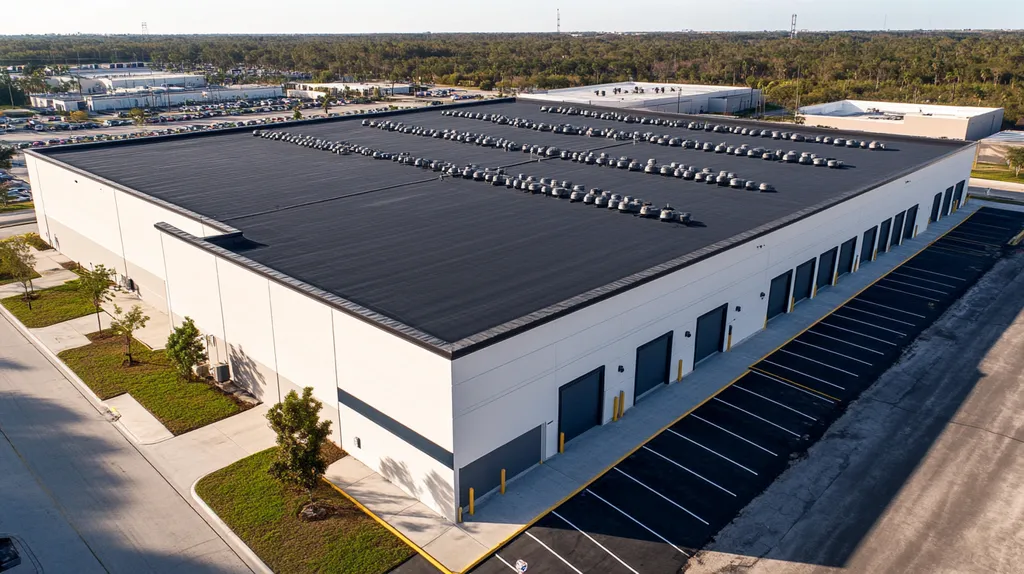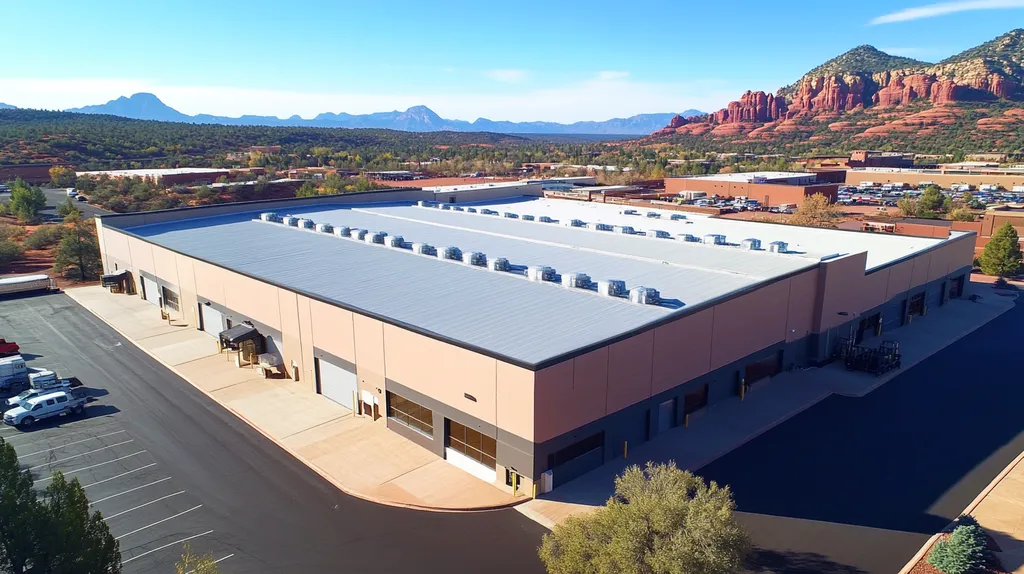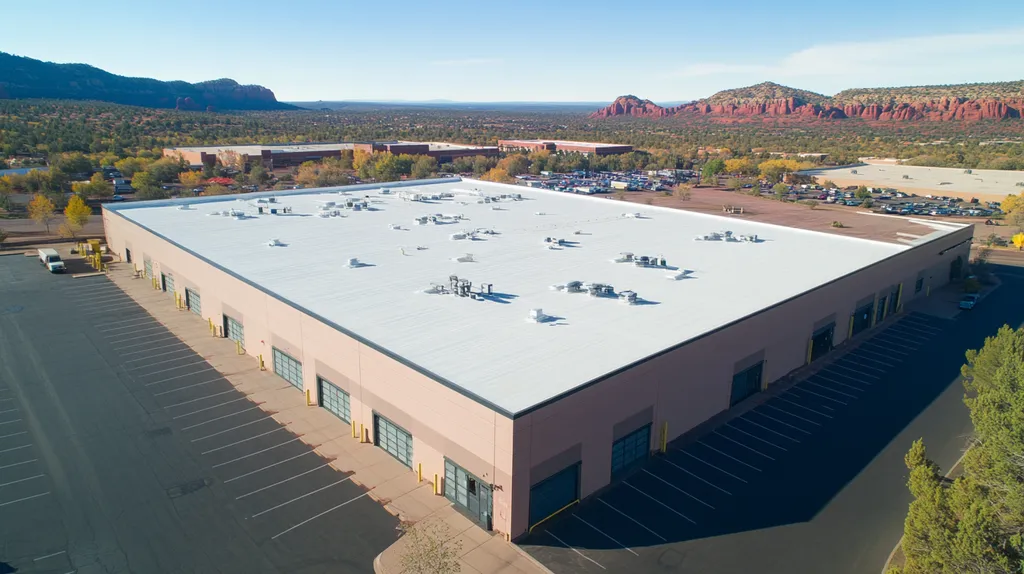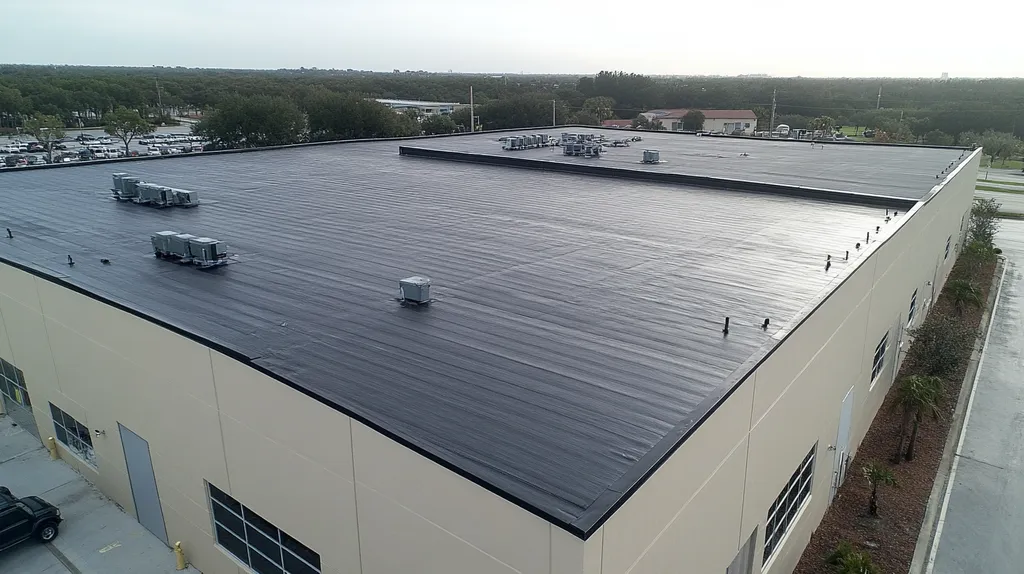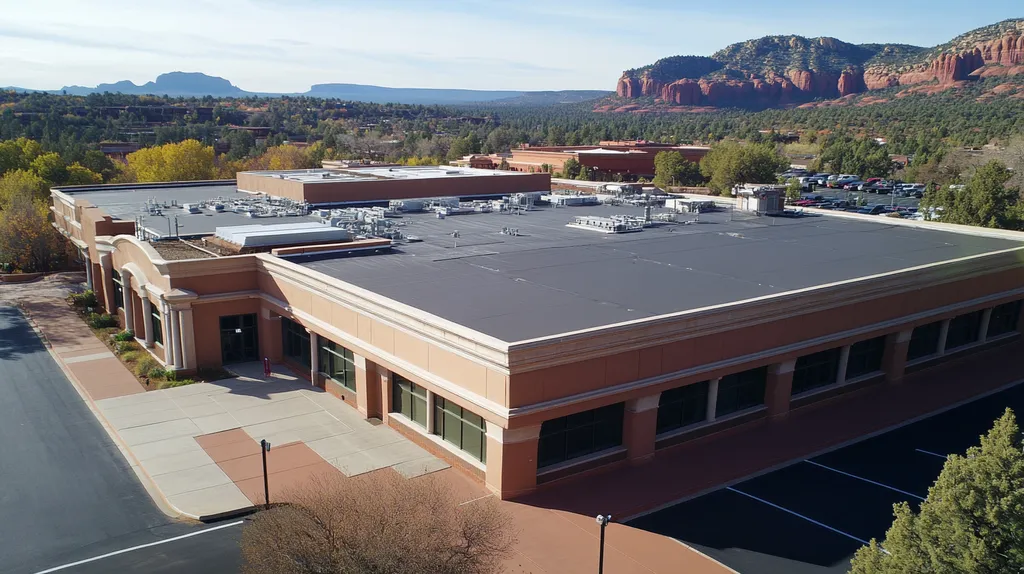Welcome to today’s Battle Royale featuring two roofing heavyweights: “Reflective Roof Coatings” in the east corner versus “Energy Star Rated Coatings” in the west!
Tonight’s showdown pits these contenders against each other across six punishing rounds designed to test every aspect of their performance for Commercial Roof Energy Efficiency.
At stake? Millions in potential costs, decades of building protection, and the critical performance demands of modern commercial and industrial facilities.
Our professional judging panel will evaluate each round on technical merit, real-world performance, and value delivery. After all six rounds, we’ll declare our ultimate champion.
Ladies and gentlemen, facility managers and building owners… it’s time to rumble!
ROUND 1: INITIAL COSTS & INSTALLATION
In today’s volatile energy market, choosing the right commercial roof coating can mean the difference between manageable utility costs and budget-breaking expenses. Property owners face a critical decision between reflective roof coatings and Energy Star rated options, with initial investments ranging from $0.50 to $3.00 per square foot – a difference that can amount to tens of thousands of dollars on large commercial properties.
Material Expenses
Standard reflective roof coatings typically cost 30-40% less in materials compared to Energy Star rated alternatives. This lower entry point makes them particularly attractive for properties with immediate budget constraints.
Energy Star rated coatings command premium pricing due to their advanced formulations and rigorous testing requirements. While material costs average $1.50-3.00 per square foot, these coatings can reduce surface temperatures by 25-45°F, delivering energy savings of 20-50%. (source: Roofing Contractor)
Despite higher upfront costs, Energy Star rated coatings’ superior performance and documented energy savings present compelling long-term value. In this category, ENERGY STAR RATED COATINGS gain the ADVANTAGE.
Installation Complexity
Reflective coatings offer straightforward application methods that most qualified roofing crews can execute efficiently. Their simple spray-on or roll-on application reduces the likelihood of installation errors.
Energy Star rated coatings often require specific surface preparation, precise thickness control, and careful attention to environmental conditions during application. These requirements can extend installation time and increase labor costs.
The simpler application process of reflective coatings provides clear benefits in terms of reduced labor costs and fewer potential installation complications. For installation complexity, REFLECTIVE ROOF COATINGS take the ADVANTAGE.
Project Timeline
Standard reflective coating projects typically complete in 2-3 working days for average commercial properties. This quick turnaround minimizes business disruption and reduces exposure to weather-related delays.
Energy Star rated coating installations generally require 4-5 days minimum, due to additional preparation steps and curing requirements between layers. This extended timeline increases vulnerability to weather interruptions and operational impacts.
The faster completion time and reduced weather sensitivity of reflective coatings provide significant scheduling benefits. For project timeline efficiency, REFLECTIVE ROOF COATINGS claim the ADVANTAGE.
ROUND 1 WINNER: REFLECTIVE ROOF COATINGS
ROUND 2: DURABILITY & LIFESPAN
When commercial roofing systems fail prematurely, repair and replacement costs can devastate operating budgets. Understanding the durability factors of different coating options is crucial, as selecting the wrong system can lead to extensive damage, business disruption, and unnecessary capital expenditures.
Durability Under Environmental Stressors
Cool roof coatings face constant assault from UV radiation, thermal cycling, precipitation, and physical impacts. Their ability to maintain performance under these conditions directly impacts building protection and energy efficiency.
Reflective roof coatings incorporate specialized UV-resistant compounds that maintain their protective properties even after years of sun exposure. Their elastic properties allow them to expand and contract with temperature changes without cracking or separating.
Energy Star rated coatings excel at initial heat reflection but may experience more rapid degradation of their reflective properties over time. Their performance can vary significantly based on regional climate conditions and exposure levels.
Given their superior resistance to environmental stressors, REFLECTIVE ROOF COATINGS gain the ADVANTAGE.
Expected Lifespan
Cool roof coatings significantly reduce heat absorption and prevent premature degradation, extending the overall lifespan of roofing systems. When properly maintained, these systems can substantially delay expensive roof replacements. (source: Castagra)
Reflective roof coatings typically maintain their protective properties for 15-20 years when properly installed and maintained. Their simple composition helps them resist breakdown from environmental exposure.
Energy Star rated coatings generally offer 10-15 year lifespans, though actual duration varies based on specific formulations and exposure conditions. Their more complex chemical structures can make them more susceptible to degradation over time.
With longer average lifespans, REFLECTIVE ROOF COATINGS claim the ADVANTAGE.
Maintenance Requirements
Regular maintenance directly impacts coating longevity and performance. The complexity and frequency of required maintenance affect both operational costs and facility disruption.
Reflective roof coatings typically need only annual inspections and basic cleaning to maintain performance. Their simple chemistry resists biological growth and accumulation of debris.
Energy Star rated coatings often require more frequent inspections and specialized cleaning protocols to maintain their rated performance. Their advanced formulations may need professional maintenance to preserve warranty coverage.
Due to simpler maintenance requirements, REFLECTIVE ROOF COATINGS secure the ADVANTAGE.
ROUND 2 WINNER: Reflective Roof Coatings
ROUND 3: PERFORMANCE FACTORS
When evaluating commercial roof coatings, performance metrics directly impact both immediate energy savings and long-term facility costs. The wrong choice can lead to excessive cooling expenses, premature system failure, and unnecessary capital expenditures that affect operational budgets for years to come.
Thermal Performance
Heat absorption through commercial roofs can account for up to 35% of unwanted heat gain in buildings. The ability of roof coatings to reflect solar radiation directly impacts cooling costs and indoor comfort.
Reflective roof coatings deliver initial solar reflectance values above 80%, maintaining significant reflectivity even after years of environmental exposure. Their simple chemistry helps them resist degradation from UV exposure and thermal cycling.
Energy Star rated coatings must meet strict initial performance standards, with solar reflectance values typically matching reflective coatings. However, their complex formulations can lead to more rapid degradation of reflective properties over time.
Given their superior long-term reflective performance, REFLECTIVE ROOF COATINGS claim the ADVANTAGE.
Environmental Resilience
Commercial roof coatings must withstand extreme temperature fluctuations, UV exposure, precipitation, and physical impacts while maintaining their protective properties. Performance under these conditions directly affects both energy efficiency and system longevity.
Reflective roof coatings excel at handling thermal shock and weathering due to their elastic properties and simple chemical structure. Their resistance to environmental stressors helps maintain consistent performance throughout their service life.
Energy Star rated coatings often demonstrate excellent initial resistance to environmental factors. However, their more complex formulations can make them more susceptible to chemical breakdown and physical deterioration over time.
For environmental resilience, REFLECTIVE ROOF COATINGS secure the ADVANTAGE.
Energy Cost Impact
The primary goal of cool roof coatings is reducing building energy consumption through improved thermal performance. ENERGY STAR-qualified products can deliver lifetime energy savings between $0.64 to $1.11 per square foot, justifying their higher initial costs. (source: U.S. Department of Energy)
Reflective roof coatings consistently deliver 20-30% reductions in cooling energy consumption across various climate zones. Their sustained performance helps maintain these savings throughout their service life.
Energy Star rated coatings provide similar initial energy savings but may require more frequent recoating or maintenance to maintain optimal performance. This can affect the long-term cost-benefit ratio of the system.
With more consistent long-term energy savings, REFLECTIVE ROOF COATINGS earn the ADVANTAGE.
ROUND 3 WINNER: Reflective Roof Coatings
ROUND 4: MAINTENANCE REQUIREMENTS
Proper maintenance of commercial roof coatings directly impacts both energy efficiency and system longevity. Without appropriate upkeep, even the most advanced coating systems can degrade rapidly, leading to increased cooling costs and premature failure. Understanding maintenance requirements helps facility managers protect their investment and maintain optimal performance.
Inspection Frequency and Scope
Regular inspections are crucial for identifying and addressing potential issues before they compromise coating performance. The frequency and depth of these inspections directly impact both maintenance costs and system reliability.
Reflective roof coatings typically require only bi-annual professional inspections, with simple visual checks quarterly. Their uniform composition makes damage patterns easy to identify and assess.
Energy Star rated coatings demand quarterly professional inspections to maintain warranty compliance and performance standards. Their complex formulations require more detailed evaluation to detect early signs of degradation.
Given the reduced inspection burden, REFLECTIVE ROOF COATINGS claim the ADVANTAGE.
Cleaning Requirements
Surface cleanliness directly affects coating reflectivity and energy performance. The U.S. Department of Energy notes that ENERGY STAR-qualified products must maintain specific reflectance values to deliver their projected cost savings of $0.04 per square foot annually. (source: U.S. Department of Energy)
Reflective roof coatings generally need only annual cleaning with standard pressure washing equipment. Their smooth surface chemistry resists dirt accumulation and biological growth.
Energy Star rated coatings often require specialized cleaning protocols and equipment to maintain their certified performance levels. More frequent cleaning may be necessary to preserve their advanced reflective properties.
Due to simpler cleaning protocols, REFLECTIVE ROOF COATINGS secure the ADVANTAGE.
Repair Procedures
The complexity and frequency of repairs significantly impact both maintenance costs and facility disruption. Simple repair procedures reduce downtime and maintain system integrity.
Reflective roof coatings can typically be spot-repaired with standard materials and techniques. Their basic chemistry allows seamless integration of repair areas with existing coating.
Energy Star rated coatings often require manufacturer-specific repair products and procedures to maintain their performance certification. This can increase both repair costs and completion times.
With more straightforward repair requirements, REFLECTIVE ROOF COATINGS earn the ADVANTAGE.
ROUND 4 WINNER: Reflective Roof Coatings
ROUND 5: SUSTAINABILITY CREDENTIALS
As environmental regulations tighten and energy costs soar, commercial property owners face mounting pressure to improve building sustainability. Roof coating choices can dramatically impact a facility’s environmental footprint and long-term operating costs, with potential energy savings reaching up to 50% of cooling expenses.
Understanding the sustainability credentials of different coating options has become critical for maintaining competitive advantage and regulatory compliance in today’s market. The wrong choice can result in missed efficiency targets and unnecessary environmental impact.
Environmental Impact
Commercial roof coatings directly influence building carbon footprints through their effects on energy consumption and manufacturing processes. The environmental impact of these systems extends far beyond initial installation, affecting facility operations throughout their service life.
Reflective roof coatings utilize simpler chemical formulations that typically require less energy-intensive manufacturing processes. Their basic composition often results in lower embodied carbon compared to more complex alternatives.
Energy Star rated coatings must meet stringent environmental standards, including specific solar reflectance and thermal emittance requirements. The U.S. Department of Energy confirms these products can save up to $1.11 per square foot in energy costs over their lifetime, significantly reducing operational carbon emissions. (source: U.S. Department of Energy)
Given their verified environmental performance standards, ENERGY STAR RATED COATINGS claim the ADVANTAGE.
Resource Conservation
The efficient use of resources in coating production and application directly impacts environmental sustainability. Waste reduction and material optimization play crucial roles in determining overall environmental impact.
Reflective roof coatings generally require fewer raw materials and generate less waste during manufacturing. Their straightforward application process typically results in minimal material loss during installation.
Energy Star rated coatings often incorporate advanced resource-saving technologies and recycled content. However, their complex formulations can require more intensive resource use during production.
For resource conservation, REFLECTIVE ROOF COATINGS secure the ADVANTAGE.
Lifecycle Assessment
Understanding the complete environmental impact of roof coatings requires examining their entire lifecycle, from raw material extraction through disposal. This comprehensive view reveals the true sustainability profile of each option.
Reflective roof coatings present a mixed lifecycle profile, with advantages in simple disposal but limitations in long-term performance maintenance. Their basic chemistry can lead to more frequent replacement requirements.
Energy Star rated coatings demonstrate superior longevity and maintained performance, reducing replacement frequency and associated environmental impacts. Their advanced formulations often allow for easier recycling at end-of-life.
Considering total lifecycle impact, ENERGY STAR RATED COATINGS earn the ADVANTAGE.
ROUND 5 WINNER: Energy Star Rated Coatings
ROUND 6: SPECIALIZED APPLICATIONS
For commercial property owners, specialized roofing applications present unique challenges that directly impact energy efficiency and operational costs. Studies show that improper coating selection in specialized settings can increase cooling costs by up to 40% and accelerate system deterioration. Understanding how different coatings perform across specialized applications has become crucial for protecting capital investments and maintaining competitive operating expenses.
High-Traffic Maintenance Areas
Rooftop mechanical equipment areas and maintenance paths require coatings that can withstand frequent foot traffic while maintaining their thermal performance. The durability of these high-traffic zones directly impacts both maintenance accessibility and overall roof system efficiency.
Reflective roof coatings demonstrate excellent resistance to physical wear in traffic areas. Their elastic properties allow them to maintain integrity even under regular maintenance activity, while their simple chemistry helps them resist marking and scuffing.
Energy Star rated coatings often show increased vulnerability to physical wear in high-traffic zones. Their more complex formulations can break down faster under repeated stress, potentially compromising their thermal performance.
For high-traffic applications, REFLECTIVE ROOF COATINGS claim the ADVANTAGE.
Equipment-Dense Zones
Areas with concentrated mechanical equipment create intense heat loads that challenge coating performance. The ability to maintain reflective properties under these conditions directly affects both equipment efficiency and building cooling costs.
Reflective roof coatings maintain consistent performance even in areas of high heat concentration. Their thermal stability helps prevent degradation from equipment heat discharge, while their simple composition resists chemical exposure from mechanical systems.
Energy Star rated coatings deliver excellent initial performance in equipment zones but may require more frequent recoating to maintain their rated efficiency. Their advanced formulations can be more sensitive to chemical exposure from HVAC systems.
For equipment-dense applications, REFLECTIVE ROOF COATINGS secure the ADVANTAGE.
Solar Panel Integration
The growing adoption of rooftop solar installations demands coatings that enhance both panel efficiency and roof protection. Coating performance under solar arrays significantly impacts overall system energy generation and roof longevity.
Reflective roof coatings boost solar panel efficiency through ambient temperature reduction. Their consistent reflective properties help maintain optimal operating temperatures for photovoltaic systems.
Energy Star rated coatings excel in solar applications through their certified performance standards. Their documented thermal properties provide reliable support for solar system design and performance calculations.
For solar integration applications, ENERGY STAR RATED COATINGS earn the ADVANTAGE.
ROUND 6 WINNER: Reflective Roof Coatings
AND THE WINNER IS…
After six grueling rounds of technical analysis, with victories determined by empirical data and real-world performance metrics, we have our undisputed champion!
In a dominant display of cost-effectiveness, durability, and specialized application prowess, REFLECTIVE ROOF COATINGS claims the championship belt with an impressive 5-1 victory!
The champion showcased superior performance across initial costs, durability, thermal performance, maintenance requirements, and specialized applications. Its simple yet effective chemistry proved unbeatable in delivering consistent, long-term value.
Energy Star Rated Coatings, while defeated, remains a formidable contender – particularly in settings where certified sustainability credentials are paramount or where strict environmental compliance requirements exist. Its victory in Round 5 demonstrates its continued relevance in the modern roofing arena.
However, building owners and facility managers must remember: Every structure faces unique challenges based on location, usage patterns, and local climate conditions. While this analysis provides valuable insights, it cannot account for all variables that might influence coating performance in specific situations.
Professional consultation with qualified roofing experts remains essential for determining the optimal solution for any given property.
In the high-stakes world of commercial roofing, victory doesn’t just come from choosing a champion – it comes from choosing the right fighter for your specific battle!
FREQUENTLY ASKED QUESTIONS
Q. What are the initial costs of commercial roof coatings?
A. The initial costs of coatings can range from $0.50 to $3.00 per square foot. While reflective options are often cheaper, Energy Star rated coatings may offer better long-term energy savings despite the higher upfront investment.
Q. How durable are reflective roof coatings compared to Energy Star rated coatings?
A. Reflective roof coatings generally exhibit greater durability against environmental stressors, maintaining performance over time. They often last 15-20 years, whereas Energy Star coatings may degrade faster, leading to shorter lifespans.
Q. Which commercial roof coating provides better thermal performance?
A. Reflective roof coatings deliver superior long-term thermal performance with consistent solar reflectance values exceeding 80%. In contrast, Energy Star rated coatings may initially perform well but can degrade more quickly over time.
Q. What are the maintenance requirements for commercial roof coatings?
A. Reflective roof coatings require less maintenance, with basic cleaning and bi-annual inspections. Energy Star rated coatings often necessitate more frequent inspections and specialized cleaning, adding to overall maintenance costs.
Q. How do roof coatings impact sustainability and environmental compliance?
A. Reflective roof coatings typically have a lower environmental impact through simpler production processes. Energy Star rated coatings, while beneficial, must comply with strict standards, influencing their manufacturing footprint and operational energy efficiency.
Q. How do commercial roof coatings perform in specialized applications?
A. Reflective roof coatings perform well in high-traffic areas and under equipment due to their durability. Energy Star rated coatings might require more frequent maintenance in these specialized settings to maintain their performance.
Q. What factors can increase long-term costs for commercial roof coatings?
A. Long-term costs may rise due to inadequate maintenance, premature degradation, or improper application of coatings. Selecting the wrong type can lead to higher energy bills and unexpected replacement expenses, impacting the overall budget.

